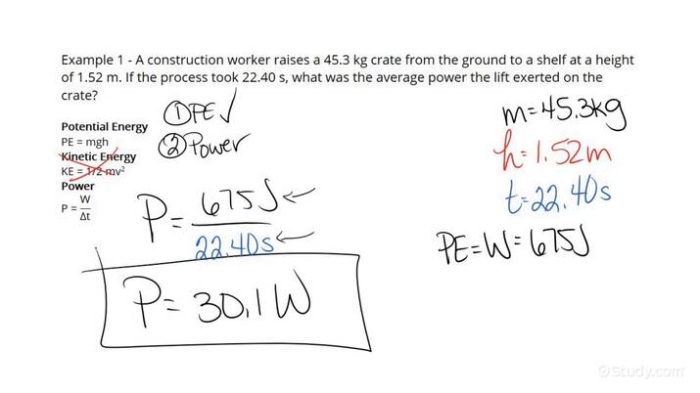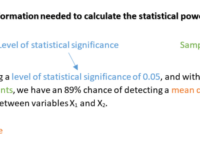how to Calculate Power of the Study
What do you mean by Power of the Study?
Before we dive into the details of how to calculate the power of a study, let’s first understand what power of the study actually means. In simple terms, the power of a study is the probability that it will correctly reject a false null hypothesis. In other words, it is the likelihood that the study will find a significant effect if there is indeed an effect present. Power is a crucial aspect of research design as it directly impacts the reliability and validity of the study results.
How to Calculate Power of the Study?

Image Source: study.com
Calculating the power of a study involves several key components, including the effect size, sample size, significance level, and statistical power. The formula for calculating power is:

Image Source: quantifyinghealth.com
Power = 1 – β = P(rejecting H0 | H1 is true)
Where:
β = Type II error rate (probability of failing to reject a false null hypothesis)
H0 = null hypothesis
H1 = alternative hypothesis
To calculate power, you need to determine the effect size, which is the magnitude of the difference between the null hypothesis and the true population value. The effect size is typically represented by d, which is calculated as:
d = (μ1 – μ0) / σ
Where:
μ1 = mean of the treatment group
μ0 = mean of the control group
σ = standard deviation
Once you have determined the effect size, you can calculate the sample size needed to achieve a desired power level. This can be done using power analysis software or online calculators based on the effect size, significance level, and desired power level.
What is Known About Power of the Study?
The power of a study is influenced by various factors, including the effect size, sample size, significance level, and statistical power. A study with low power is more likely to produce false negative results, leading to inaccurate conclusions. On the other hand, a study with high power is more likely to detect true effects, increasing the reliability of the study findings.
Researchers often aim for a power level of at least 80% to ensure that the study has a high likelihood of detecting true effects. However, the power of a study can vary depending on the research design, methodology, and data analysis techniques used.
Solution to Calculating Power of the Study
To improve the power of a study, researchers can increase the sample size, reduce the variability in the data, or use more sensitive statistical tests. It is important to conduct power calculations before starting a study to ensure that the sample size is adequate to detect meaningful effects.
Additionally, researchers should carefully consider the effect size and significance level when designing a study to maximize the power of the research. By understanding the factors that influence power and using appropriate statistical methods, researchers can enhance the quality and validity of their study results.
Information About Power of the Study
Power analysis is a critical component of research design, as it helps researchers determine the sample size needed to achieve a desired power level. By calculating the power of a study, researchers can assess the likelihood of detecting true effects and make informed decisions about the study design and methodology.
Power analysis is commonly used in experimental and observational studies to ensure that the study has sufficient statistical power to detect meaningful effects. By considering the effect size, sample size, and significance level, researchers can optimize the power of their study and enhance the reliability of the research findings.
Conclusion
In conclusion, calculating the power of a study is essential for ensuring the reliability and validity of research findings. By considering factors such as effect size, sample size, and significance level, researchers can determine the likelihood of detecting true effects and make informed decisions about study design and analysis. By conducting power calculations before starting a study and using appropriate statistical methods, researchers can enhance the quality of their research and contribute to the advancement of knowledge in their field.
FAQs
1. Why is power analysis important in research?
Power analysis is important in research because it helps researchers determine the sample size needed to achieve a desired power level, ensuring that the study has a high likelihood of detecting true effects.
2. How does the effect size impact the power of a study?
The effect size represents the magnitude of the difference between the null hypothesis and the true population value, influencing the power of a study. A larger effect size typically results in higher power.
3. What is the significance level in power calculations?
The significance level, often denoted as α, represents the probability of rejecting the null hypothesis when it is true. It is typically set at 0.05 or 0.01 in research studies.
4. How can researchers increase the power of their study?
Researchers can increase the power of their study by increasing the sample size, reducing data variability, or using more sensitive statistical tests to detect true effects.
5. What is the role of statistical power in research design?
Statistical power is the probability of correctly rejecting a false null hypothesis, playing a crucial role in research design by determining the reliability and validity of study results.
6. How can researchers conduct power calculations?
Researchers can conduct power calculations using power analysis software, online calculators, or statistical formulas based on the effect size, sample size, and significance level of the study.
7. Why should researchers aim for a power level of at least 80%?
Researchers should aim for a power level of at least 80% to ensure that the study has a high likelihood of detecting true effects and minimizing the risk of false negative results.
how to calculate power of the study








